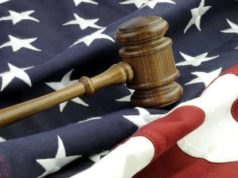
In the Apple
Computer, Inc. v. Franklin Computer Corp. copyright infringement case, Apple
Computer, Inc., now Apple Inc., decided to name Franklin Computer Corporation in
a lawsuit in regards to the recent release of an operating system the company
had been distributing. Apple Computer, Inc. said that there was a direct
parallel to the operating system that the company itself had developed and
released and the new, Ace 100, by the Franklin Computer
Corporation.
Apple
Computer, Inc. filed the copyright infringement case at the United States
District Court for the Eastern District of Pennsylvania. The filing of
Apple Computer, Inc. on May 12, 1982, marked the date of the first copyright
infringement case to be litigated on a matter involving an operating system in
a high court.
Apple Computer, Inc. had released the operating
system, Apple II, in 1977 at the West Coast Computer
Faire. It was designed by engineer and co-founder of the company, Steve
Wozniak, along with other members of the team. Apple II proceeded Apple I, a personal
computer, which was the company’s first product release. The basis of the
copyright infringement case was the claim of Apple Computer, Inc., which stated
that Franklin Computer Corporation, a consumer electronics manufacturer, had
been distributing a replica of Apple II in their release of the Ace 100 in
1982.
One of the
largest arguments by Apple Computer, Inc. in the copyright infringement case
against Franklin Computer Corporation was that the operating system, Ace 100, had included some of the same mathematical logic and language
for the ROM as Apple II. Another major
citation on the basis of the copyright infringement case against Franklin
Computer Corporation was that Ace 100 featured a similar
motherboard scheme to that of Apple II.
The position of Franklin Computer Corporation in
the copyright infringement case was that, although the company had used many of
the concepts from Apple II in their creation of the Ace 100, it would
not have been quite as constructive or effective for the company to attempt at
creating a brand new operating system. The Franklin Computer Corporation
stated that the product would not have the capacity to achieve compatibility if
starting completely from scratch.
The company
went on to state that some components of the Apple II operating system were not copyrighted, so therefore they took on
the implication that they could be copied. The Franklin Computer
Corporation added to their defense in the copyright infringement case by
stating that they were in the midst of producing software that would be
completely independent.
The United States District Court for the Eastern
District of Pennsylvania declared the copyright infringement case of Apple
Computer, Inc. v. Franklin Computer Corp. in favor of Franklin Computer
Corporation. Dissatisfied with the verdict, Apple Computer, Inc. filed
for an appeal with the United States Court of Appeals for the Third
Circuit. By mid-1983, and just three business days after the District Court
had ruled in the favor of Franklin Computer Corp., the Federal court issued a
verdict in the copyright infringement case for Apple Computer, Inc.
The stated basis
for the ruling was that a program is protected under copyright law even if it
is written in a combination of print and object code. The ruling had important
implications for the enforcement of copyright on computer programs.




























